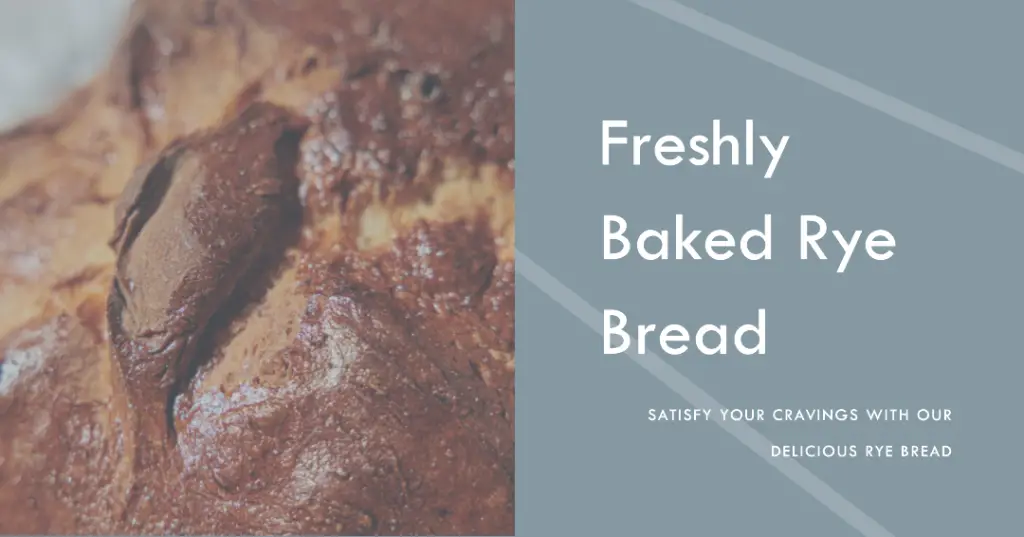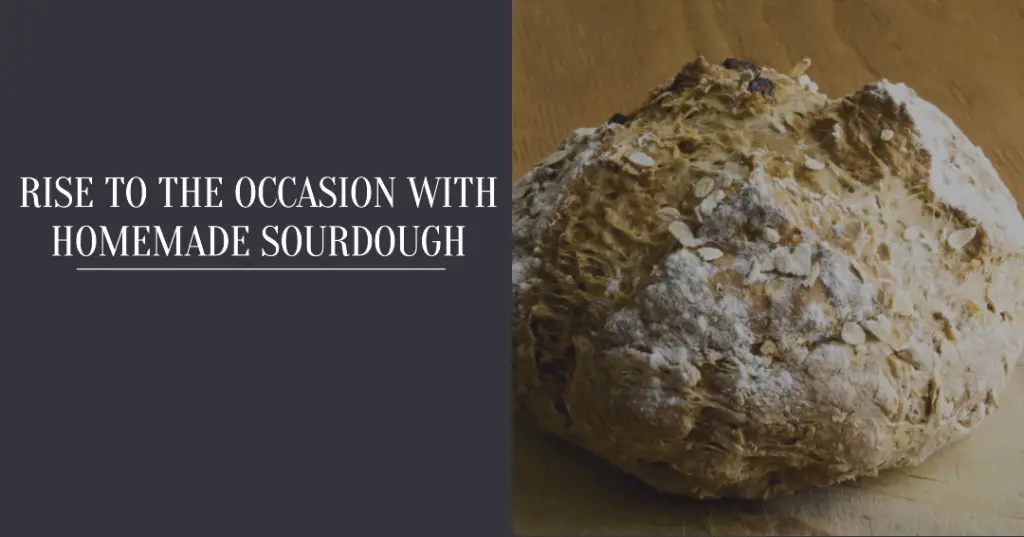Rye Bread Vs Sourdough : When it comes to choosing the perfect loaf, the battle often narrows down to two favorites: rye bread and sourdough. Each boasts unique flavors, textures, and health benefits, leaving consumers curious about their differences.
Which bread reigns supreme in nutrition? How do their fermentation processes vary? And ultimately, which one is right for your sandwich or toast?
Embark on a flavorful journey with us as we slice into the distinctions between rye bread and sourdough.
This comprehensive guide is designed to answer your burning bread questions, ensuring you make an informed choice on your next bakery visit.
Rye Bread: Delving into the Grainy Depths
Rye bread, with its distinctively rich, slightly tangy flavor, has been a staple in various cultures for centuries.

Originating from Europe, particularly regions with cooler climates, this hearty bread is made from rye grain, which imparts its unique color and taste. Beyond its enticing flavor profile, rye bread boasts numerous health benefits.
One of the hallmarks of rye bread is its dense texture, thanks to the nature of rye flour, which is lower in gluten than wheat.
This makes it a popular choice among those who prefer a bread that’s filling yet doesn’t cause a rapid spike in blood sugar levels.
Dietary fibers in rye can also aid in digestion and promote a feeling of fullness, potentially aiding in weight management.
However, there’s more to rye bread than its health attributes. The cultural and historical significance of this bread is vast, from being a survival food during times of war to holding a symbolic place in various traditions and ceremonies.
Whether you’re interested in its health benefits, historical roots, or simply curious about the different varieties (like pumpernickel or Borodinsky bread), diving into the world of rye bread promises a journey of delightful discoveries.
Don’t miss to read our next article : Pressure Cooker Vs Crock Pot
Sourdough: The Ancient Art of Natural Fermentation
Sourdough, with its signature tang and airy crumb, represents more than just a type of bread; it symbolizes a timeless culinary tradition that dates back thousands of years.

Harnessing the power of natural fermentation, sourdough stands apart in the world of bread-making with its unique preparation process and delightful flavor nuances.
At the heart of sourdough lies its starter a symbiotic mix of wild yeast and lactic acid bacteria. This living entity breathes life into the dough, allowing it to rise without the need for commercial yeast.
The extended fermentation process not only imparts the bread’s characteristic tang but also breaks down gluten, making it easier to digest for many.
Beyond its rich taste and chewy texture, sourdough offers a plethora of health benefits. Rich in probiotics and lower in phytic acid than most bread, sourdough can support gut health and ensure better nutrient absorption.
Sourdough’s cultural impact is equally profound. From the gold rush miners in 19th century America, known as “sourdoughs” due to their reliance on the bread, to its revered status in artisan bakeries around the world today, the legacy of sourdough is vast and varied.
Embarking on the sourdough journey, whether as a baker or a consumer, offers an opportunity to connect with an age-old tradition, relishing a bread that’s as nourishing for the soul as it is for the body.
Rye Bread Vs Sourdough – Comprehensive Comparison
Rye Bread vs Sourdough: A Tantalizing Taste Test
When deciding between rye bread and sourdough, the palate embarks on a journey of complex flavors, textures, and nuances. Both breads offer distinctive taste profiles, but how do they truly differ?
Rye Bread:
Rye bread, especially when made predominantly or wholly from rye flour, has a deep, earthy taste. The presence of certain amino acids in rye gives it a characteristic slightly sour flavor, even if it’s not fermented like sourdough.
The denser the rye bread (think of pumpernickel), the more intense and robust this flavor tends to be. Depending on its preparation, rye can also have malty, fruity, and even spicy undertones.
Sourdough:
Sourdough’s defining taste is its tanginess, which results from the fermentation process involving wild yeast and lactic acid bacteria.
This natural fermentation imparts a sour flavor that can range from mildly tart to sharply acidic, depending on factors like fermentation duration and the specific characteristics of the starter used.
Traditional white sourdough offers a crisp crust and a chewy, slightly moist interior with a mild tang, while whole wheat or other grain variants might introduce nuttier and earthier flavors.
In Comparison:
While both breads can have a sour note, the sourness in rye bread is more subdued and earthy, blending with its inherent grainy flavors. Sourdough, on the other hand, wears its acidity on its sleeve, making its tanginess more prominent and central to its taste profile.
Choosing between the two often boils down to personal preference. Some might adore the hearty, deep flavor of rye, while others might gravitate towards the refreshing tang of a well-made sourdough. The beauty lies in the variety and the delightful opportunity to taste and compare.
Rye Bread vs Sourdough: A Caloric Breakdown
When considering the nutritional aspects of bread, particularly the caloric content, it’s essential to remember that specifics can vary based on ingredients, preparation methods, and serving sizes.
However, when comparing standard rye bread to sourdough, we can provide a general overview.
Rye Bread:
- A typical slice of rye bread, which weighs around 32 grams, contains roughly 83 calories.
- The caloric distribution in rye bread mainly comes from carbohydrates, followed by a moderate protein content and a minimal amount of fats.
- Whole grain rye breads tend to be denser and might have slightly more calories, but they also bring in more fiber, which can be beneficial for digestion and satiety.
Sourdough:
- A standard slice of white sourdough bread, weighing around 32 grams, may contain approximately 90 calories.
- Like rye bread, the primary caloric source in sourdough is carbohydrates. However, since sourdough often has a more open crumb (or air pockets), some versions might be slightly less dense and thus contain fewer calories per slice.
- Whole grain sourdough variants, incorporating wheat, rye, or other grains, may vary in calorie count, often being a bit higher than white sourdough due to the increased density and grain content.
In Comparison:
While the calorie count for both rye bread and sourdough is relatively close, the slight edge might go to rye bread for being marginally lower in calories for a comparable slice. However, the difference is often negligible in the context of an entire meal or daily intake.
When choosing between the two, it’s beneficial to consider other nutritional aspects, such as fiber content, micronutrients, and how each bread aligns with one’s dietary needs and preferences. After all, a balanced diet is about more than just counting calories.
Rye Bread vs Sourdough: A Caloric Breakdown
When considering the nutritional aspects of bread, particularly the caloric content, it’s essential to remember that specifics can vary based on ingredients, preparation methods, and serving sizes.
However, when comparing standard rye bread to sourdough, we can provide a general overview.
Rye Bread:
- A typical slice of rye bread, which weighs around 32 grams, contains roughly 83 calories.
- The caloric distribution in rye bread mainly comes from carbohydrates, followed by a moderate protein content and a minimal amount of fats.
- Whole grain rye breads tend to be denser and might have slightly more calories, but they also bring in more fiber, which can be beneficial for digestion and satiety.
Sourdough:
- A standard slice of white sourdough bread, weighing around 32 grams, may contain approximately 90 calories.
- Like rye bread, the primary caloric source in sourdough is carbohydrates. However, since sourdough often has a more open crumb (or air pockets), some versions might be slightly less dense and thus contain fewer calories per slice.
- Whole grain sourdough variants, incorporating wheat, rye, or other grains, may vary in calorie count, often being a bit higher than white sourdough due to the increased density and grain content.
In Comparison
While the calorie count for both rye bread and sourdough is relatively close, the slight edge might go to rye bread for being marginally lower in calories for a comparable slice. However, the difference is often negligible in the context of an entire meal or daily intake.
When choosing between the two, it’s beneficial to consider other nutritional aspects, such as fiber content, micronutrients, and how each bread aligns with one’s dietary needs and preferences. After all, a balanced diet is about more than just counting calories.
